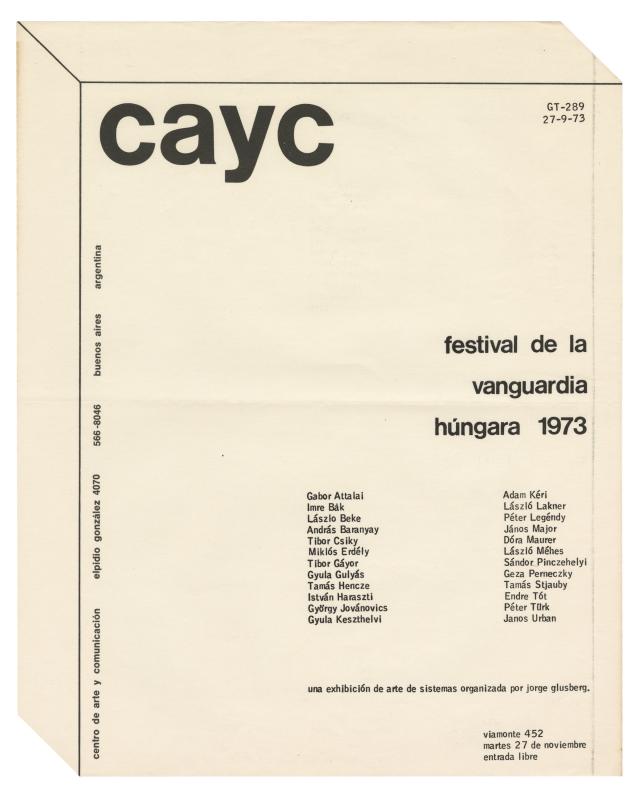Ever since it was founded, the CAYC (Centro de Arte y Comunicación), helmed by the cultural promoter, artist, and businessman Jorge Glusberg, was intended as an interdisciplinary space where an experimental art movement could flourish. The establishment of collaborative networks connecting local and international artists and critics played a key role in this process. The exhibitions shone a light on these exchanges, in which overviews of trends or individual artists introduced the innovations of international contemporary art and made Argentine and Latin American artists better known on the global scene.
The eagerness to create links between Latin American and Eastern European art was a key component in the CAYC’s somewhat politicized strategy for international exchange. The center advocated a “unity of strengths” among local art scenes in what were considered Third World countries that Glusberg saw as a form of art that was part of the world scene but still addressed the specific problems the countries had in common.
During his many trips to Eastern European countries, Glusberg formed connections with artists such as Endre Tót and, especially, with art critics in Hungary (László Beke and Janusz Bogucki). That network of connections led to the organization of exhibitions of works from those countries at the CAYC, one of which was the Festival de la vanguardia húngara. (See GT-289 [doc. no. 1476437].)
Those links to countries in what was referred to as the Socialist Bloc had a significant impact on the CAYC’s international strategy by including works by “Third World” artists in a joint evolutionary undertaking that, as Glusberg said, had revolutionary potential and a tangible desire to change society. (Katarzyna Cytlak, “Hacia el arte latinoamericano globalizado.” Revista de Estudios Globales y Arte Contemporáneo, 2017–18.)
The Festival de la vanguardia húngara included photographs, collages, sculptures, actions in urban spaces, performance art, mail artworks, visual poetry, and artists’ books that not only pushed traditional aesthetic boundaries, but also challenged the social and political establishment’s conventions in Eastern Europe’s authoritarian states. Endre Tót (b. 1937) was an avant-garde artist who turned away from painting in the early 1970s and began experimenting with typewriters to produce mail art, graffiti, and actions performed in the street. By using these methods he was able to avoid the ideological censorship in his country, and not just in the field of art. His series TÓTalZEROS and TÓTalJOYS (1970–76) are emblematic works from that period. An example of his creative approach can be seen in the “audiovisual letter” he sent to Glusberg, in which he experiments with a typewriter, repeating a symbol to evoke its sound.

